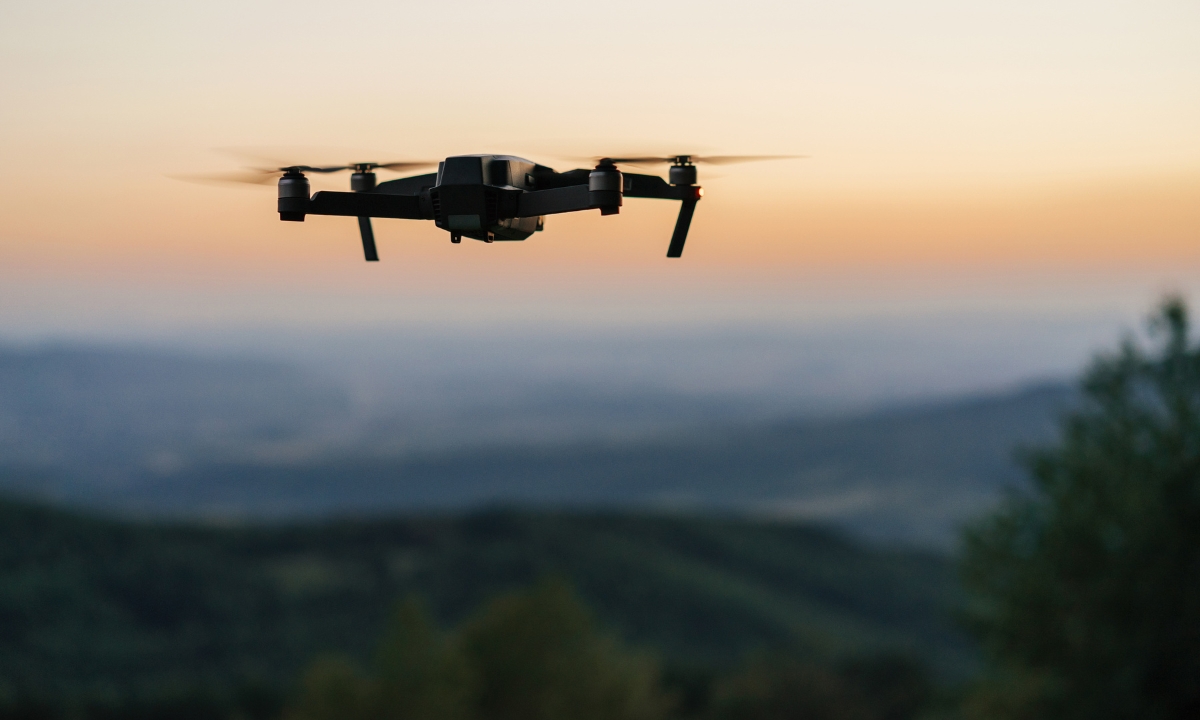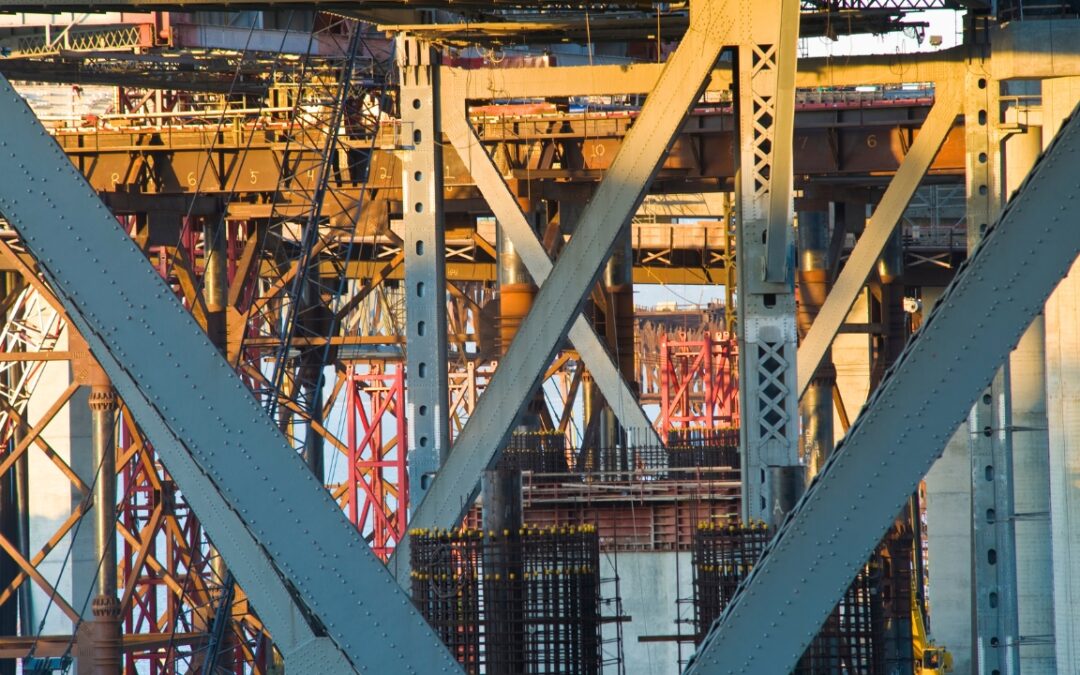Bridges are critical infrastructure components that support our transportation systems. Ensuring their safety and longevity is paramount. Traditionally, bridge inspections were labor-intensive and time-consuming, often involving visual inspections and manual data collection. However, technological advancements have revolutionized the way we assess, maintain, and repair bridges.
We want to take a deeper look at five of the most significant elements of and advances in the technology behind highway bridge inspection, maintenance, and repair work.

Unmanned Aerial Vehicles (UAVs or Drones)
One of the most significant technological breakthroughs in bridge inspection is the widespread adoption of drones. Equipped with high-resolution cameras and sensors, drones can provide detailed visual inspections of bridges, even in hard-to-reach areas. This technology offers several advantages:
- Enhanced Safety: Drones eliminate the need for inspectors to work in dangerous environments, reducing the risk of accidents.
- Increased Efficiency: Drones can inspect bridges more quickly and efficiently than traditional methods, allowing for more frequent inspections.
- Improved Data Collection: Drones can capture high-quality images and data that can be analyzed to identify potential problems.
While these devices can add significantly to inspections and repair work by augmenting and complementing human observation, they will not replace the need for under bridge platforms.
Advanced Sensors and Imaging Techniques
In addition to drones, various advanced sensors and imaging techniques are being employed in bridge inspections. Infrared thermography can detect heat anomalies that may indicate structural problems. Ground-penetrating radar (GPR) can identify subsurface defects, such as voids or cracks, without the need for destructive testing. Laser scanning technology can create precise 3D models of bridges, facilitating detailed analysis and monitoring.
Artificial Intelligence and Machine Learning
Artificial intelligence (AI) and machine learning are also playing a crucial role in bridge inspection and repair. These technologies can:
- Analyze Data: AI algorithms can analyze vast amounts of data collected from drones, sensors, and other sources to identify potential issues.
- Predict Failures: Machine learning models can be trained to predict the likelihood of bridge failures based on historical data and current conditions.
- Optimize Repair Strategies: AI can help optimize repair strategies by analyzing different repair options and selecting the most effective and cost-efficient approach.
Robotic Systems
Robotic systems are being developed to assist in bridge inspection and repair tasks. Robotics and automation are being explored to automate routine inspection tasks and reduce the risk of human error. Robotic platforms can be equipped with sensors and cameras to conduct inspections independently, while automated systems can handle tasks such as cleaning or coating bridge surfaces. These robots can perform tasks such as:
- Cleaning and Painting: Robots can clean and paint bridges more efficiently and safely than human workers.
- Structural Health Monitoring: Robots can be equipped with sensors to monitor the structural health of bridges in real-time.
- Repair Work: Some robots are capable of performing basic repair tasks, such as filling cracks or applying coatings.
Virtual Reality and Augmented Reality
Virtual reality (VR) and augmented reality (AR) technologies are also being explored to enhance bridge inspection and maintenance. VR can create immersive simulations of bridges, allowing inspectors to visualize potential scenarios and identify potential risks. AR can overlay digital information, such as inspection data or repair instructions, onto the real-world view of a bridge, improving efficiency and accuracy.
A Closer Look at the Benefits of Technology in Bridge Inspection and Repair
The adoption of technology in bridge inspection and repair offers numerous benefits, including:
- Increased Efficiency: Technology can streamline inspection processes, reducing the time and cost associated with manual inspections.
- Improved Safety: By minimizing the need for personnel to work in hazardous conditions, technology can enhance safety.
- Enhanced Accuracy: Advanced sensors and imaging techniques can provide more accurate and detailed data, leading to better decision-making.
- Proactive Maintenance: AI and machine learning can enable proactive maintenance, preventing failures before they occur.
- Cost Savings: By identifying and addressing problems early, technology can help reduce long-term maintenance costs.

What is The Future of Bridge Inspection and Repair?
As technology continues to advance at a rapid pace, the future of bridge inspection and repair is poised for significant transformation. The integration of emerging technologies such as the Internet of Things (IoT), blockchain, and robotics will undoubtedly reshape the industry. Here’s a brief overview of what experts see in the future of highway bridge inspection and repair:
IoT-Enabled Infrastructure
The Internet of Things (IoT) refers to the interconnectedness of physical objects embedded with sensors, software, and network connectivity. In the context of bridges, IoT devices can be installed on various components, such as structural members, cables, and sensors. These devices can collect real-time data on factors like strain, vibration, temperature, and humidity. By analyzing this data, engineers can gain valuable insights into the health of the bridge and identify potential issues early on.
Blockchain for Data Integrity and Security
Blockchain technology, originally developed for cryptocurrencies, offers a decentralized and secure way to store and manage data. In bridge inspection, blockchain can be used to create an immutable record of inspection data, ensuring its integrity and preventing tampering. This is particularly important for compliance purposes and to establish a reliable historical record of the bridge’s condition.
Predictive Maintenance and Digital Twins
Predictive maintenance, enabled by data analytics and AI, will become increasingly prevalent in bridge management. By analyzing data collected from sensors and IoT devices, engineers can predict potential failures and schedule maintenance proactively, reducing downtime and costs. Digital twins, virtual representations of physical assets, can be used to simulate various scenarios and test different maintenance strategies before implementing them in the real world.
Challenges and Opportunities
While the future of bridge inspection and repair looks promising, there are also challenges to be addressed. Ensuring data security and privacy, integrating different technologies seamlessly, and overcoming regulatory hurdles are some of the key challenges that need to be overcome. However, the potential benefits of these technological advancements far outweigh the challenges.
The integration of IoT, blockchain, robotics, AR/VR, and other emerging technologies will undoubtedly transform the way we inspect and repair bridges. By embracing these advancements, we can ensure that our critical infrastructure remains safe, reliable, and resilient for generations to come.
Same Tasks, New Tools: The Integral Role of Technology in Bridge Work
Technology has played a crucial role in revolutionizing bridge inspection and repair. From drones and advanced sensors to AI and VR, these tools are enabling more efficient, accurate, and safe assessments of our critical infrastructure. As technology continues to advance, we can look forward to even more innovative solutions that will help us maintain the integrity of our bridges for years to come.
Under Bridge Platforms: Your Bridge Access Experts
Elevate Your Bridge Projects with Our Expertise
At Under Bridge Platforms, we’re more than just an equipment rental company. We’re your trusted partner for bridge access solutions. With a proven record of accomplishment serving the highway bridge industry across California, Washington, Oregon, Idaho, Nevada, Montana, Wyoming, and beyond, we’ve established ourselves as the go-to experts for under bridge equipment.
Our Commitment to Your Success
- Tailored Solutions: Our experienced team works closely with you to understand your specific project needs and provide customized solutions.
- Premium Equipment: We invest in top-tier equipment, such as the massive HPT 66 Truck Mounted Platform and the versatile Aspen A-30 Bridge Inspection Unit, ensuring optimal performance and safety.
- Comprehensive Support: From initial consultation to equipment selection and maintenance, we offer comprehensive support throughout your project.
Why Choose Under Bridge Platforms?
- Industry Expertise: Our team possesses deep knowledge of bridge infrastructure and access equipment.
- Reliable Equipment: We prioritize quality and reliability in our equipment selection.
- Personalized Service: We’re committed to building lasting relationships with our clients through exceptional customer service.
Ready to Get Started?
Contact us today to discuss your project and learn how our expertise and equipment can help you achieve your goals. Let’s work together to elevate your bridge access and ensure project success.


Recent Comments